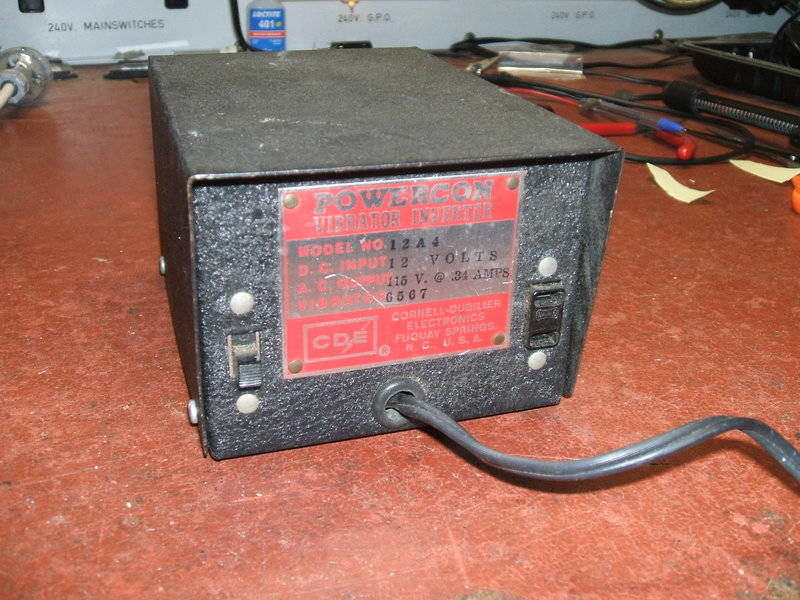

This inverter was obtained very inexpensively
from ebay. Condition was excellent, and like most of the U.S. made inverters
I've bought, looked like it had not had much use.
My impressions are that a lot of people
bought inverters on impulse for "when we go camping" but never actually
did so. One may wonder why I collect U.S. made inverters when their 110-120V
output would seem inappropriate for Australia. There's several reasons;
1)I have a small quantity of U.S. made appliances, 2)Vibrator power supplies
are something that have interested me for a long time, and, 3)Many modern
items fitted with a switchmode power supply are designed for 100-240V operation,
so can be used on a 115V inverter such as this.
Vintage inverters are far more common
in the U.S than in Australia, so they come up on ebay frequently and usually
attract few bids. If vibrator power supplies are of interest, they are
something worth collecting.
Input is 12V DC, and output is 115V 60c/s
at 340mA. Having output current specified instead of power is unusual.
It is equivalent to 39W. Possibly, the designers were thinking of loads
with low power factor as a reason for expressing output ratings this way.
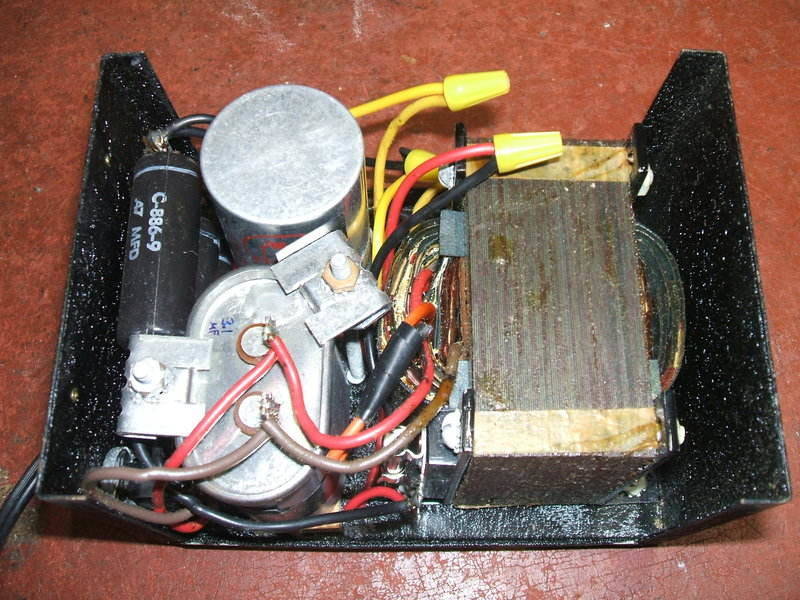
As can be seen, this is a very compact unit. The space inside is
well used.
Cornell Dubilier made vibrators themselves,
and needless to say, that's what's used in the inverter. There are a couple
of interesting aspects to the design, however.
One is that the vibrator is wired in.
It is supplied with flexible leads which are connected into circuit by
means of wire nuts. It would therefore appear that Cornell Dubilier thought
vibrator reliability was good. Not having to use a socket does make for
more compact construction, and eliminates socket troubles. The output socket
location does limit the kind of plugs that can be inserted; e.g. no round
shaped plugs, plugpack transformers, etc. It also does not accept polarised
or three pin plugs. However, it must be realised that most low power appliances
of the era did have a flat non polarised plug.
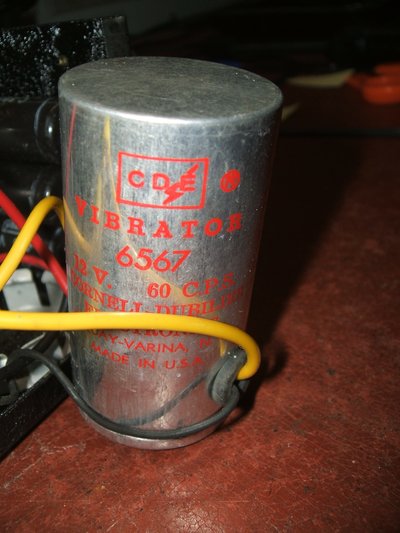
The vibrator is a wire connected unit.
I did not open the vibrator as it's of the crimped can type. It did not need contact cleaning; operating perfectly straight away. The second interesting aspect of design is the circuit:
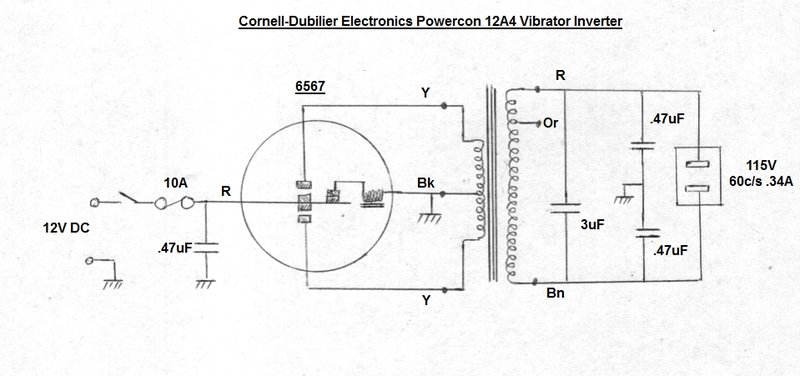
Normally, the transformer centre tap is
fed from the active battery terminal and the vibrator reed is earthed.
However, in this inverter it has been reversed. Electrically, it's the
same of course. However, vibrators where the can is connected to the reed
are obviously unsuitable. Possibly, earthing of the transformer primary
acts as an electrostatic shield and this was the reasoning for doing it
this way.
The circuit is conventional, with the
usual switch, fuse, and input filter condenser. 10A for the fuse is rather
high given the output rating of 39W. A 5A fuse would be more appropriate.
There is an unused tap on the transformer
secondary; an orange wire taped up. Why a lower voltage might be required
from it is not clear. As is usual, the input is non polarised, but one
side of the supply is connected to the chassis so this needs to be taken
into account when used in a vehicle or with earthed equipment.
The buffer capacitance consists of a 3uF
oil filled paper type, as well as two series connected .47uF's. All up,
about 3.2uF. The .47uF's are for output RFI filtering. Both output socket
pins are balanced above earth, which lessens the noise output. Sensibly,
the vibrator is a series drive type (CDE 6567)
The output waveform is typical.
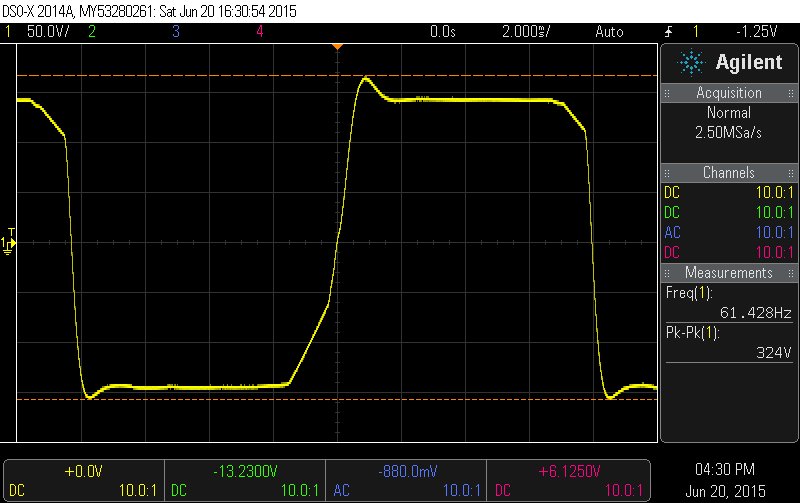
Loaded with a 240V 40W light bulb, this is the output waveform.
Peak voltage is 162, but because of the "dead time", the rms is about 115V.
Performance of this inverter is good, and very noise free. No repairs were required. I left the paper condensers in situ as the can filled oil type is unlikely to leak enough to cause problems, and as the two .47uF's are in series, they are not being exposed to particularly high voltage. I use this inverter to run this Gilfillan 68F off my home solar supply.